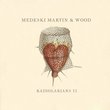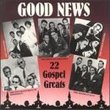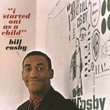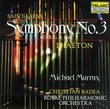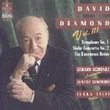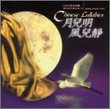| All Artists: Orlande de Lassus, Pro Cantione Antiqua Title: Lassus: Requiem; Magnificat Members Wishing: 1 Total Copies: 0 Label: Deutsche Harm Mundi Original Release Date: 1/1/2004 Re-Release Date: 3/29/2004 Album Type: Import Genres: Special Interest, Classical Styles: Opera & Classical Vocal, Chamber Music, Historical Periods, Classical (c.1770-1830) Number of Discs: 1 SwapaCD Credits: 1 UPC: 828766015324 |
Search - Orlande de Lassus, Pro Cantione Antiqua :: Lassus: Requiem; Magnificat
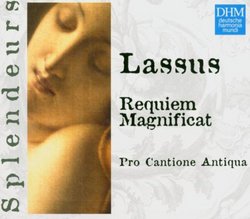 | Orlande de Lassus, Pro Cantione Antiqua Lassus: Requiem; Magnificat Genres: Special Interest, Classical
|
Larger Image |
CD DetailsSimilar CDs
Similarly Requested CDs |
CD ReviewsA voice teacher and early music fan George Peabody | Planet Earth | 01/09/2007 (5 out of 5 stars) "LASSUS' COMPOSITIONS CAN BE COMPARED IN THEIR DESIGN TO MICHAEL ANGELO AND BACH. The Flemish Orlando Lassus (1530-1594) was almost the musical twin of the Italian Palestrina. Not only did they look alike, with pointed beards and serous deepset eyes, but they held choirmaster jobs successively at the same church, and died in the same year. Unlike his "twin", Lassus did not concentrate wholly on church music; and secular writings brought his grand total to twelve-hundred and fifty, a formidable sixty volumes. Although Palestrina was accounted a good business man, Lassus cashed in on his talents even more successfully. Lassus' religious writings were serious, meditative, almost somber, whereas in those designed for the world, he of course released a lighter mood. He understood the instruments of his day,-the lute, viol and dulcimer-and wrote for groups of singers as though their voices were these instruments, instead of following a purely vocal line. While Palestrina's compositions were characterized by pure,graceful melody, Lassus' displayed more variety, greater depth, more abrupt and massive architecture; the former can be compared with Raphael and Mozart, the latter with Michael Angelo and Bach. The two men together represent the highest point attained in sixteenth century polyphonic writing. THE REQUIEM of 1580, structured according to a rigid plan, leans on the Gregorian melodies from the mass of the dead. All movements (8) are worked out in very concentrated fashion, the designs of which extend from pure imitation to numerous possible voice groupings; to homophony. FOR THE MAGNIFICAT of 1582, Lassus used as a model the famous six-voice motet 'Praeter rerum seriem' of Josquin des Pres. It's interesting to note that it was acceptable to make use of existing works to create new compositions; this was a common practise until well into the 17th century. PRO CANTIONE ANTIQUA of London with its all-male singers definitely have the authentic sound of the 16th century. With the instruments (cornets,trombones) the required deep quality adds to the authenticity of it all. Through groups like this we are able to understand something of the greatness of that art at the transition from Renaissance to Baroque." Masterful music FrKurt Messick | Bloomington, IN USA | 10/18/2005 (5 out of 5 stars) "--Orlandus Lassus--
A composer of the late Renaissance period, Orlandus Lassus was born in 1532. Franco-Flemish in background, there is a legend that he was kidnapped three different times during his boyhood for his exquisite choir voice. Lassus produced over 2,000 works in Latin, Italian, French, and German vocal genres, practically every one known in his time. His versatility is virtually unmatched. Among the 2000 pieces were 530 motets (on religious and secular themes) and over 60 masses. His career was spent in the Low Countries, in Italy, and in Germany, and he traveled extensively throughout other European countries. He died in 1594 one of the most celebrated composers of the age. --Requiem-- The mass here consists of the classic parts - Introit, Kyrie, Gradulae (Cantus gregorianus), Tractus 'Absolve Domine', Offertorium 'Domine Jesu Christe', Sanctus and Benedictus, Agnus Dei, and Communio 'Lux Aeterna'. The tenor leads as cantus firmus in many parts, but there are definite pieces here that introduced new standards to the way the requiem is structures in the Renaissance, leading to Baroque times. --Motets-- Motets (in this sense) are choral settings of Latin religious texts, generally in four to six voiced parts, sometimes more. The 'O bone Jesu' (motet for four voices), 'Alma Redemptoris mater' (motet for six voices), and 'Ave Maria' (motet for five voices) show the variations in the voices. The Magnificat, on the other hand, is a large-scale, six-voice setting that draws on an earlier well known piece by Josquin des Prez. The performance here is done by the Pro Cantione Antiqua, led by Bruce Turner. The Pro Cantione Antiqua have had an extensive recording and performing history, with great experience in the kind of chant, polyphony and Renaissance style that Palestrina calls for. Turner states that in a Renaissance setting, 'music is not something fixed by the written note but something to be recreated rather than reproduced.' There is something of that here, although Lassus was rather structured in his Requiem, certainly. The Pro Cantione Antiqua is joined for certain pieces that call for more voices by members of the Collegium Aureum and the Blaserkreis fur Alte Musik Hamburg for the Magnificat and motets. These recordings were made in the early 1970s and originally released on vinyl. This transfer to digital has been done with great care, and it is a very good recording. " |

 Track Listings (5) - Disc #1
Track Listings (5) - Disc #1
